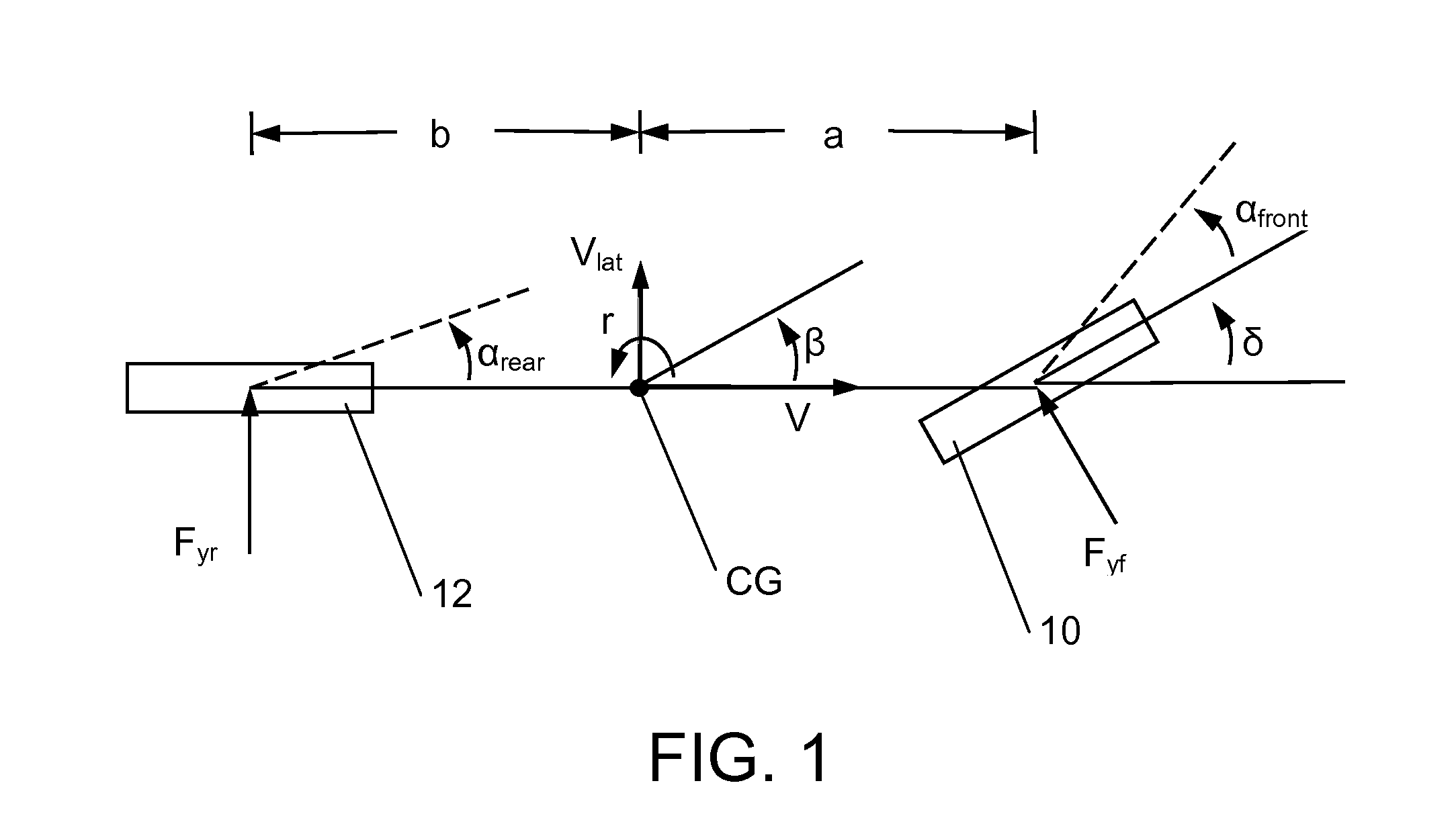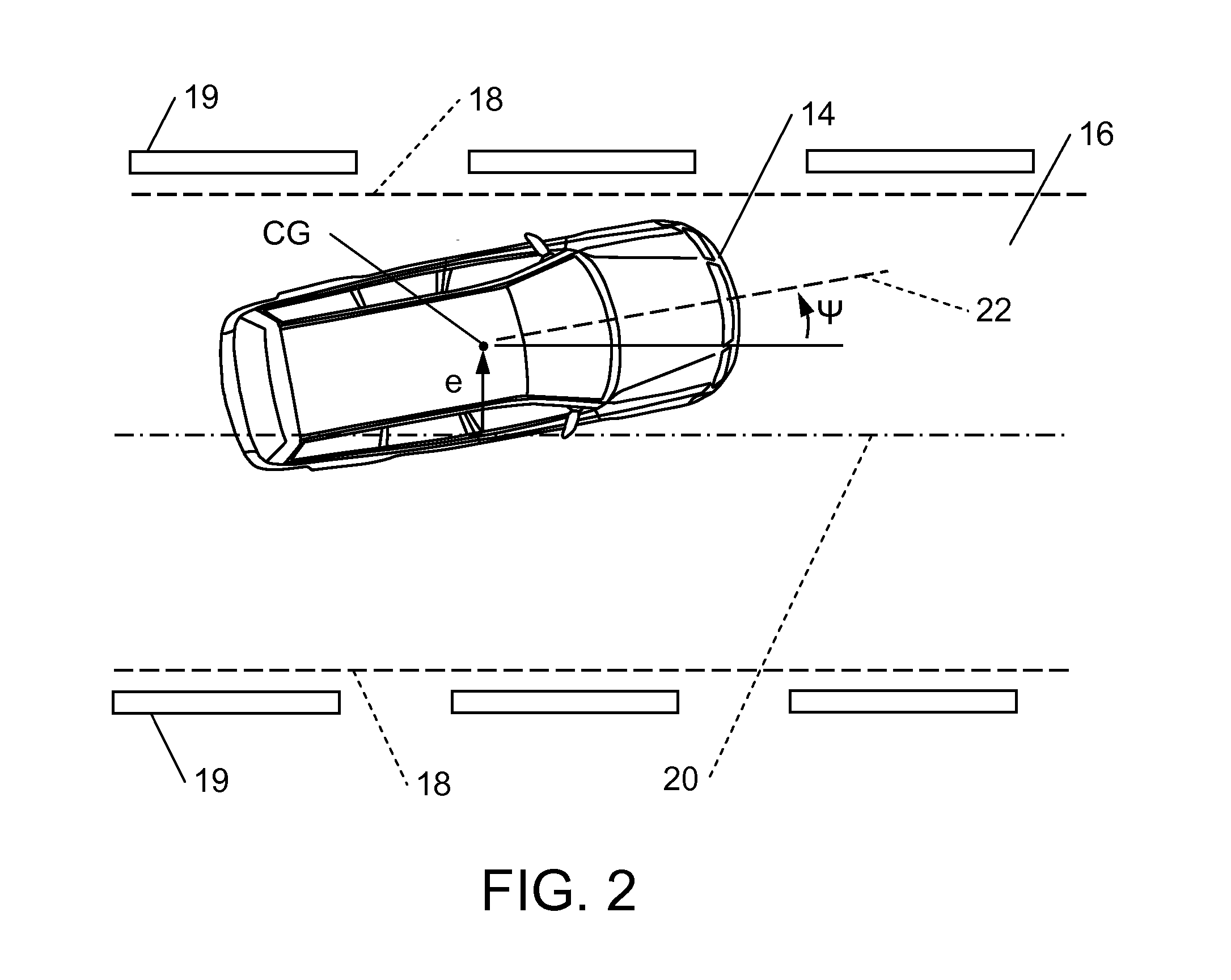Method for Controlling Vehicle Dynamics
a vehicle dynamics and control system technology, applied in the direction of steering initiation, instruments, vessel construction, etc., can solve the problems of inaccurate vehicle state variables, unadjusted response, and inability to respond appropriately, so as to improve accuracy and reliability
- Summary
- Abstract
- Description
- Claims
- Application Information
AI Technical Summary
Benefits of technology
Problems solved by technology
Method used
Image
Examples
Embodiment Construction
[0044]Referring now to the figures of the drawings in detail and first, particularly, to FIG. 1 thereof, there is shown a diagram of a planar single-track model for illustrating the coordinates, velocities and angles that are used when describing vehicle dynamics. The single-track vehicle model shown in FIG. 1 groups the left front tire and the right front tire of the vehicle into a front tire 10. The left rear tire and the right rear tire of the vehicle are grouped into a rear tire 12. Fyr and Fyf are lateral tire forces, i.e. the resultant forces on the front tire 10 and the rear tire 12. The wheel slip angle of the rear tire 12 is denoted by αrear. The wheel slip angle of the front tire 10 is denoted by αfront. The wheel slip angle α is the angle between the orientation of the tire and the velocity vector of the tire. The distance between the center of gravity CG of the vehicle and the front axle of the vehicle is indicated by a distance a. The distance between the center of grav...
PUM
 Login to View More
Login to View More Abstract
Description
Claims
Application Information
 Login to View More
Login to View More - R&D
- Intellectual Property
- Life Sciences
- Materials
- Tech Scout
- Unparalleled Data Quality
- Higher Quality Content
- 60% Fewer Hallucinations
Browse by: Latest US Patents, China's latest patents, Technical Efficacy Thesaurus, Application Domain, Technology Topic, Popular Technical Reports.
© 2025 PatSnap. All rights reserved.Legal|Privacy policy|Modern Slavery Act Transparency Statement|Sitemap|About US| Contact US: help@patsnap.com



